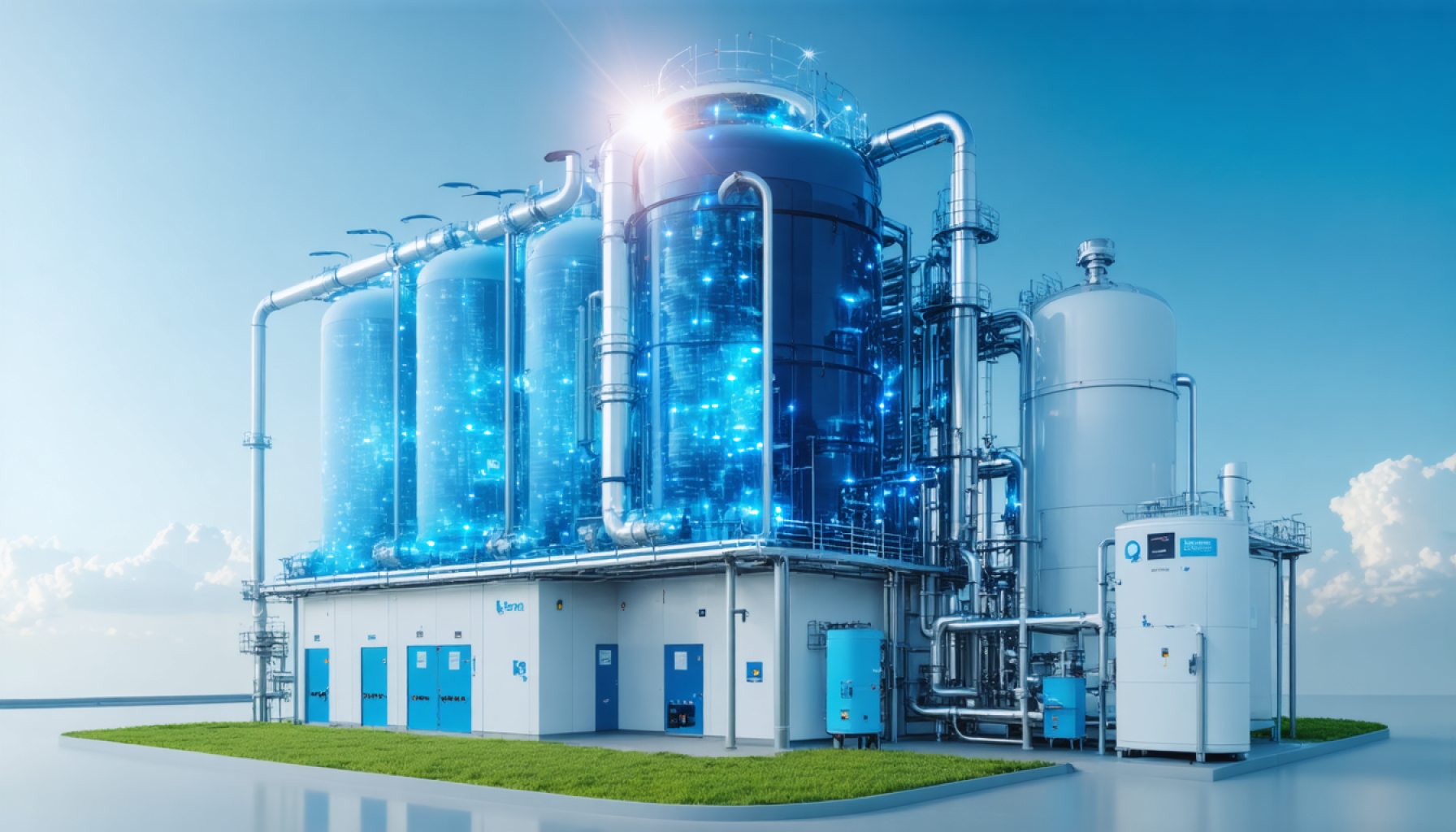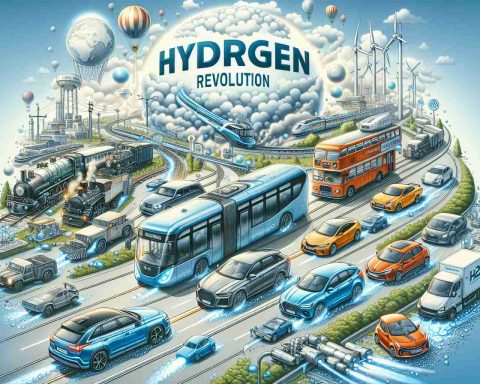- Vema Hydrogen secured $13 million in seed funding to advance clean hydrogen production.
- Led by Florian Osselin and Pierre Levin, Vema aims to make hydrogen affordable and abundant.
- Traditional hydrogen production faces challenges such as reliance on fossil fuels and high costs.
- Vema’s Stimulated Geologic Hydrogen process uses water, catalysts, and iron-rich rocks to produce hydrogen.
- This innovative method reduces production costs to less than $1 per kilogram.
- It taps into vast, sustainable underground hydrogen reserves, offering a pollution-free energy source.
- Investors, drawn to Vema’s potential, see this as a transformative shift towards a limitless energy future.
- Vema’s approach aims to redefine energy production, promising prosperity for future generations.
Vema Hydrogen, a dynamic force in the cleantech scene, staked its claim on the future of energy with a $13 million seed funding round aimed at unraveling the mysteries of clean hydrogen production. In a world teetering on the brink of climate transformation, Vema dares to dream big with a bold solution to the challenges of carbon-free hydrogen.
Picture a world where abundant hydrogen effortlessly fuels industries, cleanly and affordably. This is the vision that Vema’s founders, Florian Osselin and Pierre Levin, are working to realize. From the heart of Paris at the Marble Climate Tech Venture Studio, they set out to turn what seemed like alchemy into reality.
The traditional routes for producing hydrogen teem with challenges: fossil fuels, hefty costs, and environmental toll. Vema, however, flips the narrative. Their innovative Stimulated Geologic Hydrogen process elegantly combines science and sustainability, using water and catalysts injected into iron-rich rocks to stimulate natural geochemical reactions. No need to wait for nature to take its course; Vema unleashes hydrogen with surgical precision and remarkable scalability.
This technique slashes the cost of hydrogen production to less than $1 per kilogram, setting a new benchmark. More importantly, it promises an enduring supply, exploiting the bountiful reserves lying silently beneath the Earth’s crust—enough to fuel centuries of sustainable energy without a whisper of pollution.
Investors are electrified by Vema’s promise. As Yair Reem from Extantia Capital poetically notes, they’ve redefined the hunt for energy, transcending mere digging to a calculated, game-changing endeavor. Vema’s journey marks a pivotal shift—a leap towards an energy future not merely clean, but limitless. Here lies the potential to transform energy itself, a promise of prosperity for generations to come.
In this game of energy, Vema doesn’t just play; they redefine the rules.
Unlocking the Future: The Hydrogen Revolution Redefining Clean Energy
How-To Steps & Life Hacks
1. Understanding Clean Hydrogen Production: To grasp Vema’s impact, start by familiarizing yourself with hydrogen production basics. Traditional methods involve steam methane reforming or electrolysis, both of which have drawbacks like environmental impact and high costs.
2. Exploring New Technologies: Dive into Vema’s Stimulated Geologic Hydrogen process. This technique involves injecting water and catalysts into iron-rich rocks, stimulating natural geochemical reactions that release hydrogen efficiently.
3. Adopting Sustainable Practices: If you’re part of an organization considering hydrogen energy, focus on sustainability. Embrace technologies that lower production costs, such as those from Vema, to improve your environmental footprint.
Real-World Use Cases
– Transportation Sector: Hydrogen can revolutionize fuel for vehicles, offering a cleaner alternative to gasoline and diesel. Major automotive companies are investing in hydrogen-powered cars and trucks.
– Industrial Applications: Industries such as steel production and ammonia synthesis can benefit from cleaner hydrogen, reducing their carbon footprints significantly.
– Energy Storage: Hydrogen serves as a potent energy carrier, storing renewable energy for future use. This is particularly useful for balancing supply and demand in power grids reliant on intermittent renewable sources.
Market Forecasts & Industry Trends
– Rising Demand: The hydrogen market is expected to grow significantly. According to a report by Allied Market Research, the global hydrogen generation market is projected to reach $304 billion by 2027, growing at a CAGR of 6.6% from 2020 to 2027.
– Advancements in Technology: Beyond Vema, numerous companies are exploring efficient hydrogen generation methods. Innovations will likely drive down costs and make hydrogen more competitive with other energy sources.
Reviews & Comparisons
– Vema vs. Competitors: Unlike other hydrogen production methods, Vema’s approach is cost-effective and environmentally benign. This sets it apart from traditional techniques that rely heavily on fossil fuels.
– Cost Analysis: Vema’s goal of hydrogen costing less than $1 per kilogram could outperform the current average of $10-13 per kilogram for green hydrogen via electrolysis.
Controversies & Limitations
– Scalability and Infrastructure: While Vema offers a promising solution, scaling up production and creating the necessary infrastructure remains a challenge.
– Environmental Concerns: Although Vema’s method aims to be sustainable, extracting resources from underground still raises questions about potential ecosystem disruptions.
Features, Specs & Pricing
– Innovative Process: Vema’s process uses water and catalysts to stimulate reactions within iron-rich rocks, resulting in affordable, clean hydrogen.
– Cost Efficiency: Reducing hydrogen production costs to below $1 per kilogram is a critical differentiator, making it accessible for widespread use.
Security & Sustainability
– Energy Independence: By tapping into vast underground reserves, Vema provides a pathway to energy security and independence.
– Minimal Environmental Impact: The Stimulated Geologic Hydrogen process aims to minimize environmental disruption while maximizing resource utilization.
Insights & Predictions
– Growth Potential: As the technology matures, we can anticipate broader adoption in both developed and developing economies seeking sustainable energy solutions.
– Policy Support: Government policies favoring carbon-neutral technologies could accelerate Vema’s growth and hydrogen industry advancements.
Tutorials & Compatibility
– Integration into Existing Systems: While Vema’s technology offers new possibilities, integrating it with existing energy systems will require strategic planning and investment.
Pros & Cons Overview
Pros:
– Significant reduction in production costs.
– Environmentally friendly method.
– Potential to meet large-scale energy demands.
Cons:
– Requires development of supporting infrastructure.
– Potential environmental impacts from subsurface operations.
Conclusion & Actionable Recommendations
– Stay Informed: Keep abreast of technological and policy developments in the hydrogen sector to capitalize on emerging opportunities.
– Explore Partnerships: Organizations should consider partnerships or investments in companies like Vema to leverage new technologies for energy transformation.
– Advocate for Hydrogen: Support policy measures and public awareness campaigns that promote hydrogen as a viable, clean energy source.
For more information about the clean energy transition and innovations in hydrogen production, visit this link.














